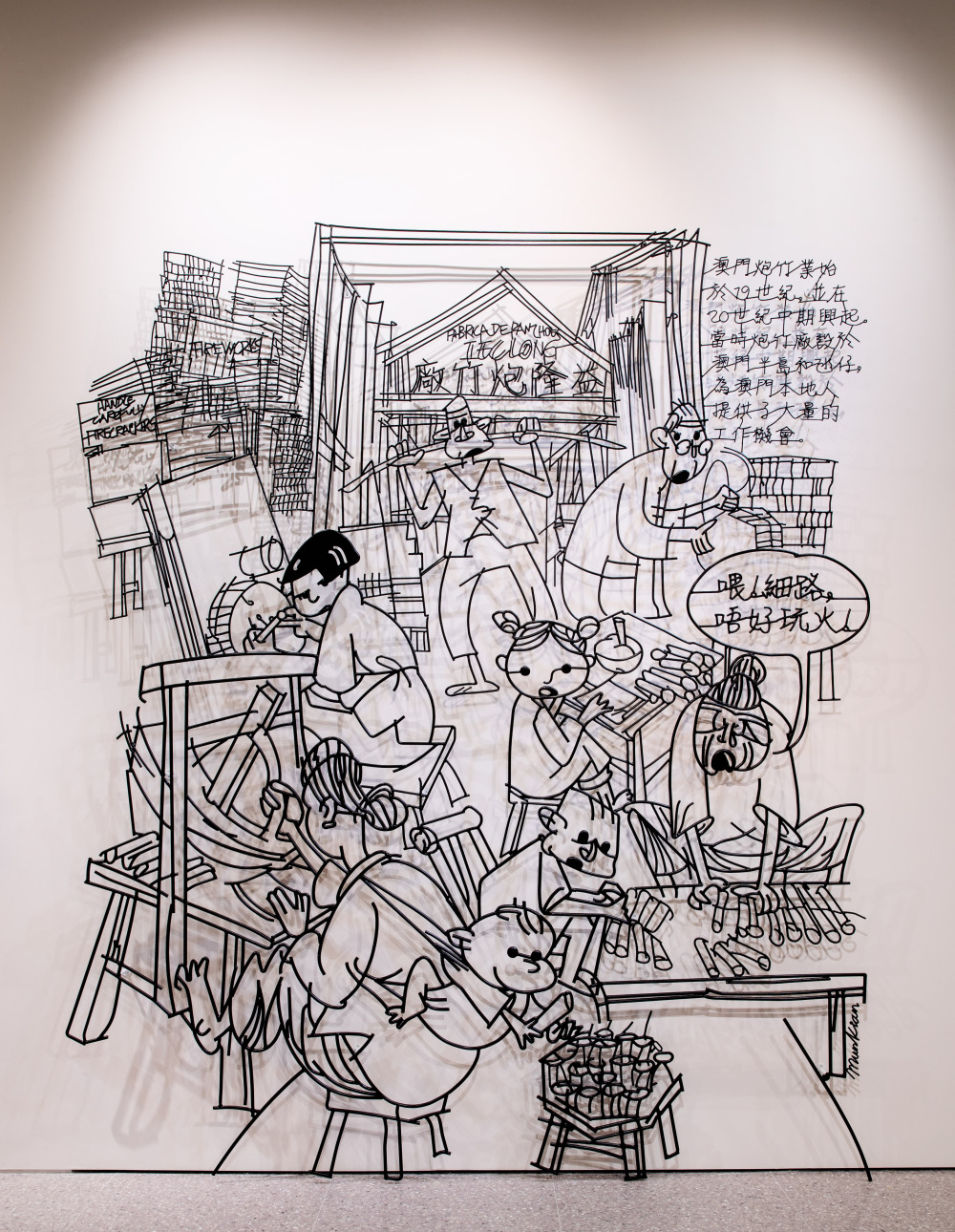

Special Exhibition of “Art Macao: Macao International Art Biennale 2021”
10
Submarine
- MEDIA
- Welded Steel
- DIMENSION
- 3600H x 3000W
- YEAR
- 2021
CHILDREN'S AUDIO GUIDE
Children’s Audio Guide is only available in Cantonese & Mandarin
SHIPBUILDING INDUSTRY:
CENTURIES OF SAILS DO US PROUD
Shipbuilding in Macao began at the end of the Ming Dynasty and early Qing Dynasty. Along with the production of firecrackers, incense and matches, shipbuilding was one of Macao’s four main traditional manufacturing industries, a backbone of its industrial heritage.
According to the Annual Record of Commercial and Industrial activities of 1965-1966, there were six shipyards in Lai Chi Vun, all of which focused on building fishing vessels for the neighbouring regions. Other shipyards were later constructed at the site, forming a group of shipyards that simultaneously offered building and repairing of fishing vessels.
The shipbuilding industry flourished in Macao between the 1970s and the early 1990s. In the beginning, the shipyards were mainly located at the Macao inner harbour. However, when the Government decided to develop and reclaim the land near inner harbour, all shipyards were moved to Lai Chi Vun Village in Coloane. Lai Chi Vun Village thus formed a unique industrial heritage landscape, retaining the traditional wooden shipbuilding techniques in the Pearl River delta area. However, with the decline of the fishing industry in the 1990s because of increased competition from neighbouring areas, it also saw to the closure of the Lai Chi Vun Shipyards.
The Lai Chi Vun Shipyards represent the craft of traditional shipbuilding and is a testament to the history and changes of the economy in Macao. It was part of Macao’s industrial heritage, existing for centuries, focused on building fishing vessels for the neighbouring regions. The Cultural Affairs Bureau have begun conservation and revitalisation efforts at Lai Chi Vun back in 2016, with plans to showcase the role that the shipyards had played in Macao’s economic development, and rebuilding the shipyards into a cultural tourism attraction.










